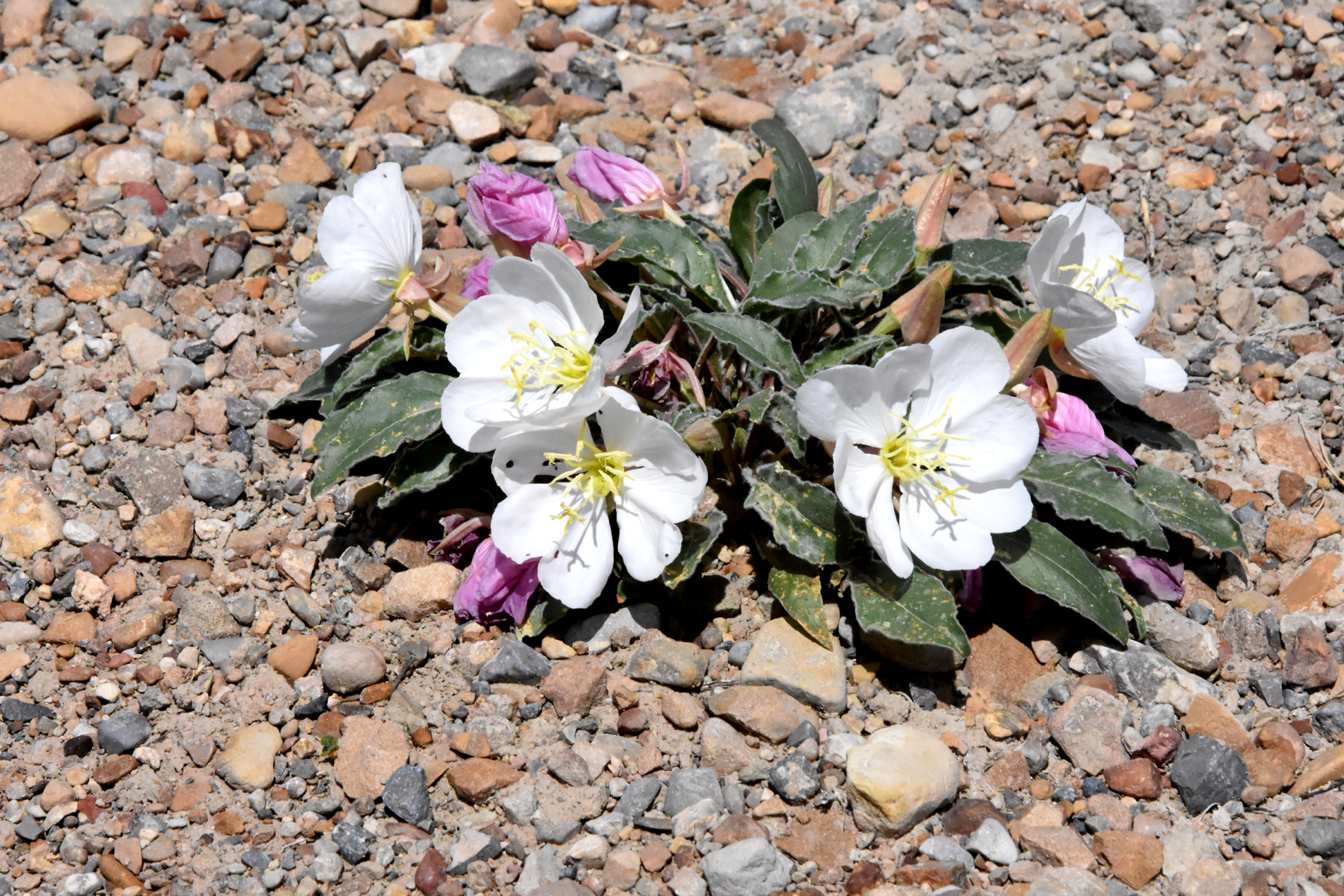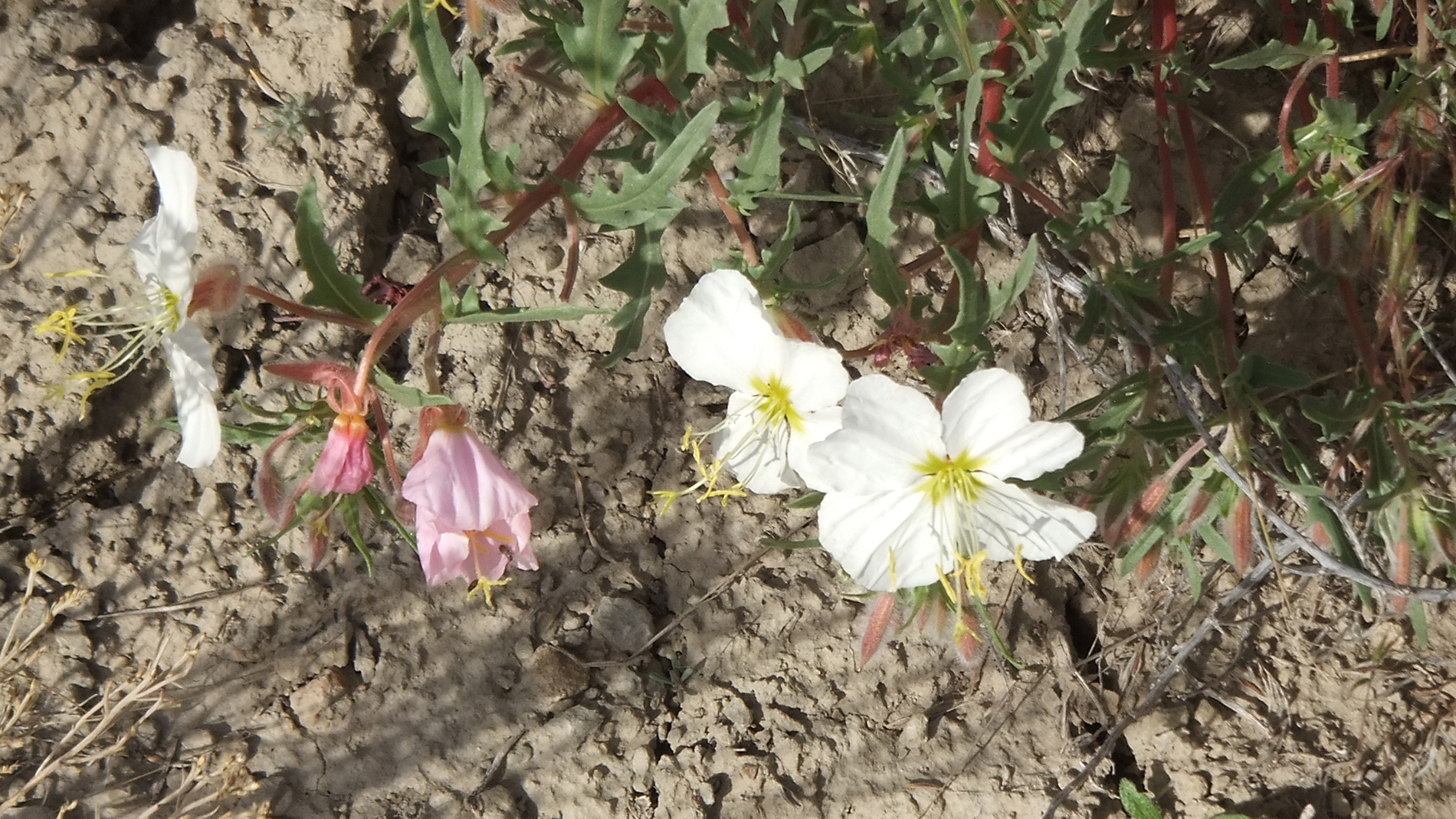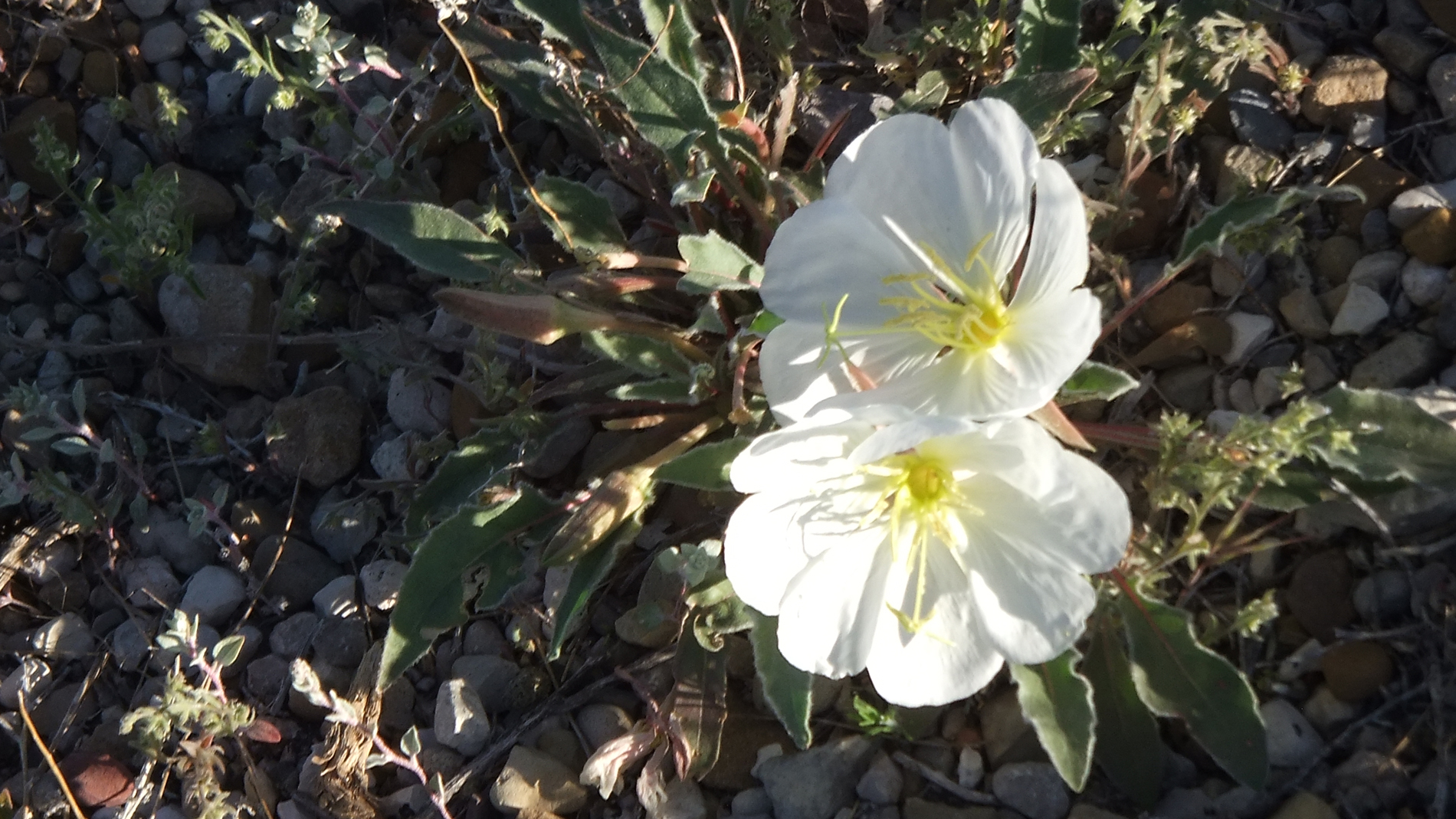Evening Primrose
The Evening Primrose plants that grow in my part of Utah appear to be Oenothera Caespitosa, the Tufted Evening Primrose, although it is difficult to be certain because there are so many different varieties of the genus Oenothera and several of these are extremely similar. The big white flowers of oenothera caespitosa, grow from a stemless rosette of long, thin, lobed leaves, which often have reddish stalks. Leaves and stems are covered by short hairs, sometimes glandular. Leaf edges are irregularly lobed, or toothed. Flowers measure 3 inches or more in diameter, with four pure white petals (deeply notched at the tip), eight pale green filaments topped by broad yellow anthers, and a longer pistil at the center. When mature the petals become light pink, then darker pink or purple when shriveled. Flower buds point upwards and the stems do not have peeling bark, unlike the similar oenothera californica. The plant is common across all the western states, and inhabits a variety of habitats. There are five varieties, some also quite widespread. The pictures below were all taken within a mile of my house and a number of these plants grow alongside the road which leads up to my driveway. The flowers usually bloom for only one day and they open in the evening and bloom all night and into the next morning, being pollinated by insects that are active at these times.
 |
| This photo was taken on May 17th, 2020, alongside the roadway which connects several oil well pumps on the north side of 4-mile hill just south of Price. The area sports many hundreds of Primrose plants and in some places, dozens can be seen together. |
 |
| Taken May 22, 2020, very near the westmost oil well on the gravel road which leads to the wells off of 3600 south. This plant is different from all others that I have seen in the Price area and it appears to be Coronopifolia, the Cutleaf Evening Primrose, because the leaves are different and the flowers are smaller. |
 |
This one was also taken May 22, 2020, with the Fuji 3D camera and was found blooming just about 100 yards from my house alongside 1750 East. The plant blooms every spring but seldom sports more than two flowers at a time. |